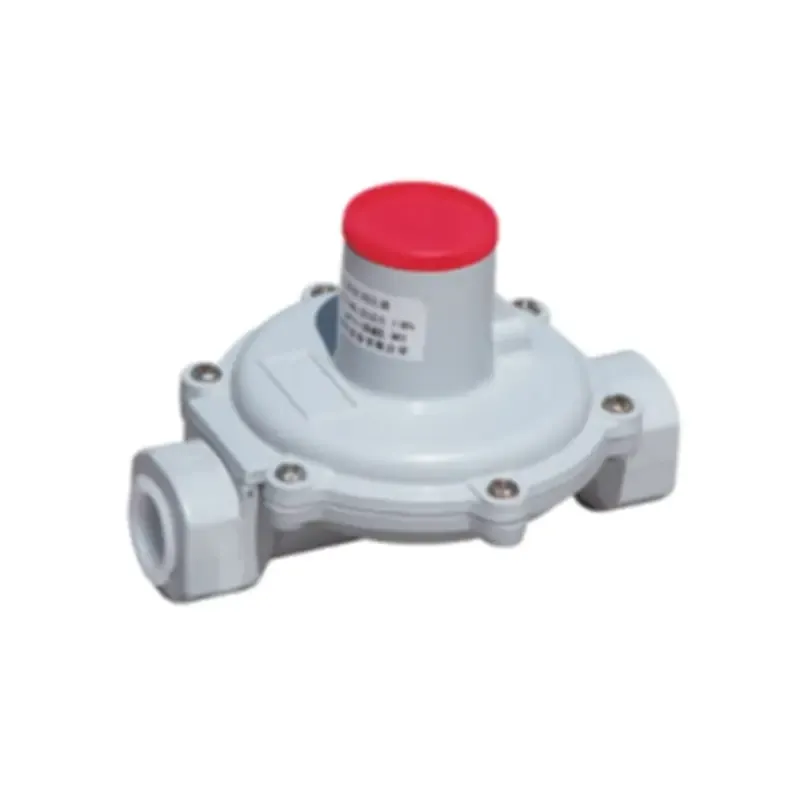
Oct . 12, 2024 08:29
Back to list
Understanding the Functionality and Importance of High Pressure Regulators in Systems
Understanding High Pressure Regulators Functions and Applications
High pressure regulators are essential components in various industries, serving to manage and control the pressure of gases and fluids. These devices ensure that the pressure within a system remains stable and at safe levels, protecting equipment and ensuring operational efficiency. Their design and functionality are critical to operations in numerous sectors, including gas distribution, manufacturing, and even medical applications.
What is a High Pressure Regulator?
A high pressure regulator is a specific type of valve that reduces the input pressure of a gas or fluid to a safer or more usable output pressure. These regulators are designed to handle high-pressure systems, which can be hazardous without proper management. The primary role of these devices is to maintain a consistent downstream pressure despite fluctuations in the upstream pressure or changes in flow rates.
High pressure regulators are typically found in applications involving compressed gases like oxygen, nitrogen, and various industrial gases. For instance, in the welding industry, regulators are crucial for controlling the flow of gases used in cutting and welding processes. They ensure that the correct gas mixture is delivered at the right pressure for optimal performance.
Key Components of High Pressure Regulators
High pressure regulators consist of several key components that work together to regulate pressure effectively. These include
1. Diaphragm or Piston The diaphragm or piston is the primary sensing element that responds to changes in pressure. It moves in response to fluctuations, adjusting the position of the valve to maintain the desired output pressure. 2. Spring Mechanism The spring provides the necessary force to return the diaphragm or piston to its original position, enabling the regulator to react dynamically to pressure changes.
3. Adjustment Screw Many regulators include an adjustment screw that allows operators to set the desired output pressure manually. This feature provides flexibility for different applications and user requirements.
4. Outlet and Inlet Ports The inlet port connects the regulator to the high-pressure supply, while the outlet port delivers the regulated pressure to the downstream system.
Importance of Selecting the Right Regulator
high pressure regulators

Choosing the right high pressure regulator is crucial for any application. Incorrect selection can lead to inefficient operations, equipment damage, and safety hazards. Factors to consider when selecting a high pressure regulator include
- Pressure Range Ensure that the regulator can handle the maximum input pressure and provide the desired output pressure.
- Flow Rate Consider the required flow rate for the application. Regulators are designed for specific flow ranges, and choosing one outside this range can lead to inadequate performance.
- Material Compatibility The materials used in the regulator must be compatible with the gases or fluids being processed. For example, corrosive gases require regulators made from specific materials like stainless steel or special alloys.
- Safety Features Look for regulators that incorporate safety features, such as pressure relief valves or burst discs, to enhance safety and prevent over-pressurization.
Applications of High Pressure Regulators
High pressure regulators are utilized in various applications across multiple industries. In the medical field, they are employed for oxygen delivery systems to ensure patients receive a consistent and safe supply of oxygen. In manufacturing, they control gases used in processes such as machining, welding, and chemical production.
Moreover, in the energy sector, high pressure regulators are essential in natural gas distribution systems, ensuring that gas is supplied at pressures suitable for residential and commercial use without risking leaks or explosions.
Conclusion
High pressure regulators play a vital role in maintaining safe and efficient operations across numerous sectors. Understanding their functionality, components, and the importance of selecting the right regulator can help ensure optimal performance in any application. As technology continues to advance, the development of high pressure regulators will likely evolve, further enhancing safety and efficiency in industrial processes.
Investing in a quality high pressure regulator tailored to specific needs can ultimately save time, resources, and potential safety risks.
Latest news
-
Safety Valve Spring-Loaded Design Overpressure ProtectionNewsJul.25,2025
-
Precision Voltage Regulator AC5 Accuracy Grade PerformanceNewsJul.25,2025
-
Natural Gas Pressure Regulating Skid Industrial Pipeline ApplicationsNewsJul.25,2025
-
Natural Gas Filter Stainless Steel Mesh Element DesignNewsJul.25,2025
-
Gas Pressure Regulator Valve Direct-Acting Spring-Loaded DesignNewsJul.25,2025
-
Decompression Equipment Multi-Stage Heat Exchange System DesignNewsJul.25,2025

